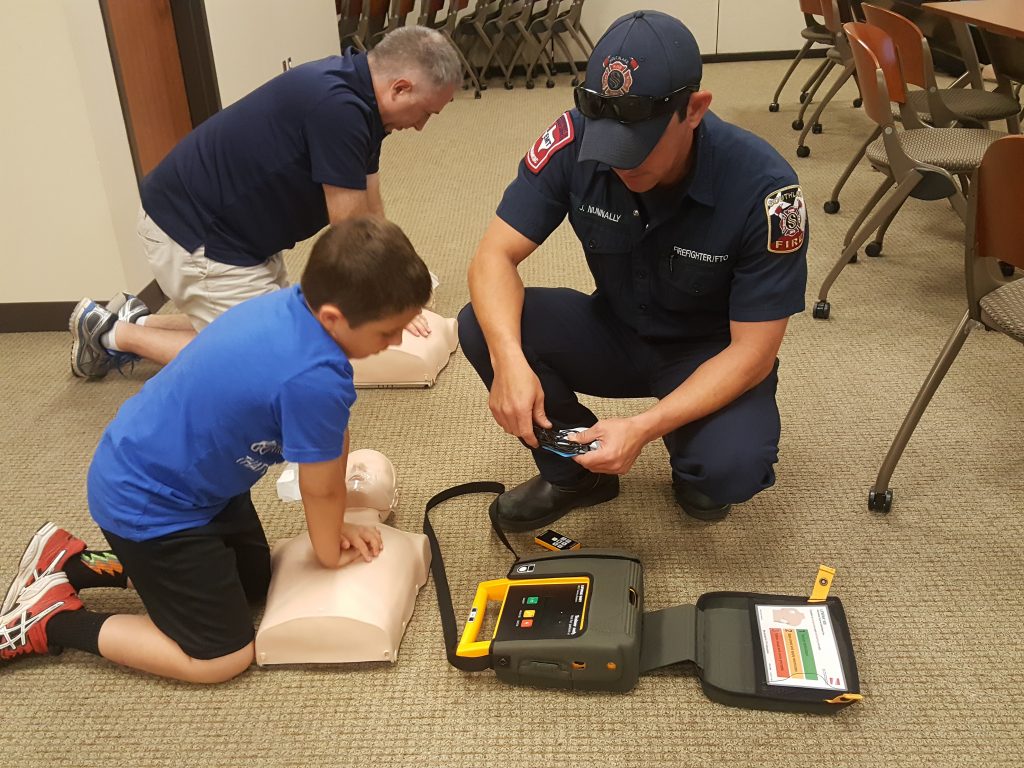The Drowning Patient:
What You Need to Know
by Russ Brown, NREMT-P
Introduction
Elise Cerami was a spirited 13 year old with ambitions of one day studying engineering and becoming a patent attorney. She was also an experienced swimmer on her high school swim team with numerous accolades to her name. In fact Elise could swim a mile in under twenty minutes and had logged over 700 competitive races. But on June 20, 2016, the teenager who was convinced of how she was more comfortable in the water then on dry land succumbed to drowning in her high school swimming pool.
The statistics are sobering. According to the World Health Organization, drowning is the third leading cause of unintentional death worldwide. There are an estimated 360,000 annual drowning deaths worldwide.1 And like the case of Elise Cerami, being a strong swimmer does not make a person immune from these statistics. EMS providers are often the first link in the chain of survival for these patients; and having a thorough knowledge of drowning related emergencies can greatly impact survival rates. Unfortunately, information related to drowning emergencies is often outdated and laden with false dogma.2 In this article we will explore the epidemiology and risk factors of drowning; as well as the most important steps the prehospital provider can take in the resuscitation of the drowning victim.
Epidemiology
Drowning is defined as a process resulting in primary respiratory impairment from submersion/immersion in a liquid medium.3 Drowning was originally classified into many subsets such as dry drowning, wet drowning, active, passive, silent and secondary drowning. The World Health Organization as well as the Centers for Disease Control, American Heart Association, and the American Red Cross now recommends that these terms no longer be used.4 The aforementioned definition of drowning is now taught as a more simple and comprehensive definition so as to avoid confusion. Drowning can also be classified as fatal drowning or non-fatal drowning. Autopsy reports have shown that 10-20 percent of the time water is not even present in the lungs due to laryngospasm. For those patients who did aspirate water, the amount of water actually present in the lungs has been shown to be comparatively little.5 Autopsy studies have shown that volumes as small as 2ml/kg of body weight were present in drowning victims. Even small amounts of water are enough to disrupt the surfactant in the alveoli of the lungs and inhibit adequate gas exchange.6
At-Risk Populations
While adults are certainly not impervious to drowning, the most at-risk group of patients are young children and adolescents. Drowning is the second leading cause of death for children ages 1-14 years second only to motor vehicle crashes. Young adults ages 14-25 are often another high risk population for drowning due to the prevalence of risk taking behavior and the consumption of alcohol.7
In fact, alcohol is responsible in 70% of drowning related emergencies involving teenagers and young adults.8 Unfortunately, child abuse should always be a consideration in the young pediatric drowning patient. The EMS provider should always look for unexplained signs of trauma or inconsistencies in the caregiver’s description of events. Minority patients and those from lower socioeconomic backgrounds are also at increased risk of drowning. Another population at risk for drowning are patients with seizure disorders. In patients with seizures, drowning is the most common cause of unintentional injury death; with the bathtub the most common site for drowning in this population.9 The notion that drowning must take place in a body of water large enough to submerge the patient is false. Many children die every year in water as little as an inch.10 Another at risk population for drowning are patients with arrhythmias such as hypertrophic obstructive cardiomyopathy or prolonged QT syndrome.11 Patients may or may not be aware of such cardiac anomalies but just the simple act of diving into a body of cold water can be enough to induce these potentially fatal arrhythmias putting the patient at risk of a syncopal episode while submerged under water.

Drowning is the second leading cause of death for children ages 1-14 years second only to motor vehicle crashes.


The most important step EMS providers can take is assuring that continuous high quality CPR is administered.
Management
The management of these drowning patients depends on if the patient is in cardiac arrest or not upon initial presentation. The most important step EMS providers can take is assuring that continuous high quality CPR is administered.12 Spinal precautions are often utilized during drowning emergencies but the evidence for cervical spine injuries sustained in drowning is actually very low. An article published in the Journal of Trauma 2001 illustrated that among 2,244 drowning patients there was only a 0.5 percent incidence of spinal cord injuries. Interestingly, among these patients who had incurred a spinal injury13 most were due to obvious traumatic factors such as a fall from a height, and one from even a vehicle crash from a bridge! EMS providers should never compromise high quality CPR or attempts at airway management to immobilize the spine unless it can be done in an expeditious fashion.
Beyond the initial resuscitation of the drowning victim the care that EMS provides is mainly supportive in nature. Protecting the airway and providing respiratory support is dependent on the degree of pulmonary involvement. As mentioned before, water in the lungs as well as particulate matter can cause inflammation and decreased surfactant in the alveoli impairing gas exchange. Patients are at high risk for infection and acute respiratory distress syndrome. Invasive as well as non-invasive ventilation should be considered. Bronchospasm should be treated with inhaled beta-agonists and possibly CPAP or BiPAP.14 If time permits a 12 lead ECG should be performed to access for any underlying cardiac arrhythmias as either the cause of drowning or the result of submersion.
Non-fatal victims of drowning who are initially symptomatic should always be encouraged by EMS providers to seek further evaluation in the emergency department. This phenomenon has traditionally been termed “dry drowning”, or “secondary drowning”, but this terminology is no longer in accepted use in the medical community.15 As stated before, the aspiration of even small amounts of fluid into the lungs can cause decreased surfactant in the alveoli resulting in inflammation and infection. A study published in Chest 1997 showed that of 41,000 lifeguard rescues only 0.5 percent with clinically minimal symptoms went on to die.16 Furthermore, 5 percent of these victims with moderate symptoms went on to die from their drowning event.17 Persistent coughing that does not resolve after several minutes, oxygen saturations less than 95 percent, or any altered mental status, should be cause for concern and should prompt the EMS provider to encourage transport.
Prevention
The EMS provider is often at the forefront of public safety and can make a huge difference in educating the public in drowning prevention. Efforts aimed at teaching children basic swimming and water safety practices as well as supporting community based programs to reduce drowning are paramount.
In May of 2017, The World Health Organization just released a publication titled Preventing Drowning: An Implementation Guide. This guide provides education on best practices for drowning prevention and how medical providers and community leaders can implement these practices. As in the case of Elise Cerami mentioned in the introduction of this article, organizations such as The Swim4Elise Foundation are helping to educate both the general public and medical providers on the dangers of drowning and best swim practices. Currently in the U.S., the majority of USA swim coaches are not even lifeguard-certified and in many instances are not even present. New regulations and rules could change this through a multimodal approach involving collaboration of many different organizations. Hopefully through public education efforts such as these, and EMS providers focusing on key resuscitative efforts such as high quality continuous CPR, a tragedy such as Elise’s can be prevented.
About the Author
References
Russ Brown, NREMT-P, is a firefighter/paramedic and EMS field training officer for Southlake Fire Department in Southlake, TX. He has worked for a variety of services including fire, private and hospital-based EMS systems. He has a particular interest in airway management and cardiac resuscitation science.

[1] World Health Organization. Fact Sheet Drowning: May 2017. Online.
[2] A.H Idris et al. Recommended Guidelines for Uniform Reporting from Data From Drowning. Circulation. Nov 2013
[3] Bierens J. Definition of Drowning: A Progress Report. Springer, 2014
[4] World Health Organization. Fact Sheet Drowning: 2017. Online.
[5] Centers for Disease Control. Unintentional Drowning: Get the Facts. 2012. http//www.cdc.gov/injury
[6] CDC. Wide Ranging online data for epidemiologic research. National Center for Health Statistics. 2016. Online
[7] Cummings P, Quan L. Trends in Unintentional Drowning: The Role of Alcohol and Medical Care. JAMA. 1999.(23)
[8] Ibid
[9] WHO: Drowning/injuries and violence prevention. Online
[10] Pediatric Child health. 2003 Feb. 8920: 117
[11] Grace Choi et al. Circulation: Cardiac Channel Defects in Swimming-triggered arrhythmia syndromes. 2004;110
[12] Quan L, Kinder D. Pediatric submersions: prehospital predicators of outcome, Pediatrics, 1992; 909-913.
[13] Journal of Trauma 2001. Incidence of spinal cord injuries in drowning patients.
[14] FG. Smith et al. Effects of Beta Agonists on clinical outcomes of ARDS. The Lancet. 2012
[15] Ibid (4)
[16] Chest 1997;1129(3) 660
[17] Ibid